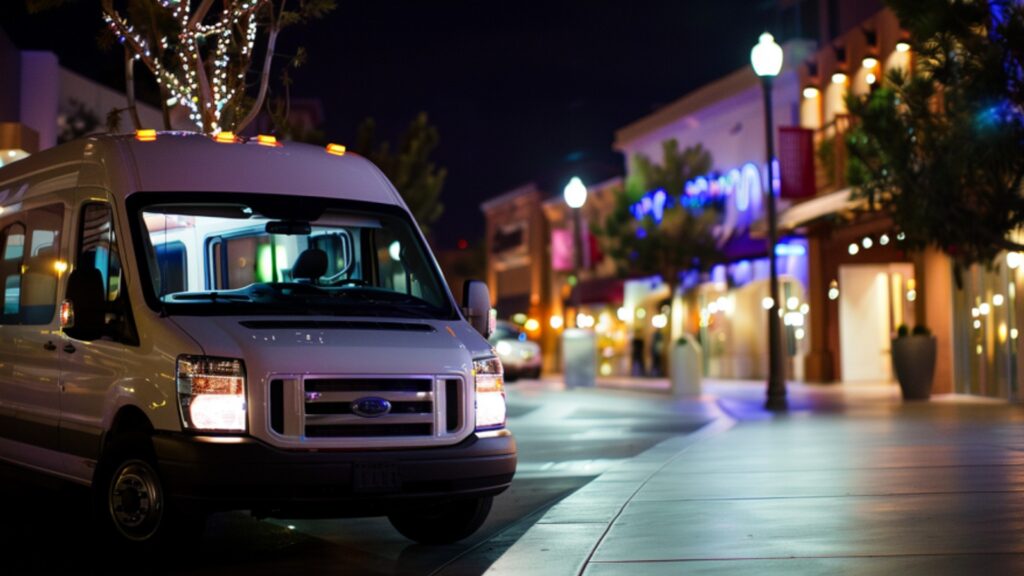
(CLAIR | Simi Valley, CA) — Simi Valley is preparing to launch a new microtransit service in spring 2025, to provide residents with flexible, on-demand local transportation. This service, which allows riders to book trips through a smartphone app or by phone, will offer an alternative to the traditional bus system. However, questions remain about whether the proposed service hours will truly meet the needs of the community, particularly local businesses that rely on evening foot traffic.
Deputy Public Works Director Benjamin Gonzales discussed the microtransit plan during an October 7 City Council meeting. He explained that the service will function similarly to ride-hailing platforms like Uber and Lyft. Microtransit will focus on specific zones within Simi Valley, connecting riders to areas that conventional buses do not cover. The goal is to fill gaps in the city’s transportation network and provide more accessible, same-day shared rides.
While the microtransit initiative is a positive step toward enhancing public transport in Simi Valley, its initial service hours—likely 8 a.m. to 5 p.m.—raise concerns about adequately supporting local businesses and residents who need evening transportation. Many of Simi Valley’s restaurants, entertainment venues, and retail businesses see most of their activity during the evening, between 5 and 11 p.m. Without public transportation available during these hours, businesses may miss out on potential customers, and workers may struggle to commute.
Microtransit could play a critical role in bridging this transportation gap. By extending service hours beyond 5 p.m., the city would better support local economic activity, allowing residents and visitors to more easily access dining, shopping, and entertainment options during peak evening hours. Without this adjustment, the service risks leaving a significant portion of community needs unmet.
Ridership on Simi Valley’s fixed-route buses has faced challenges in recent years. Pre-pandemic, ridership was 266,718 in 2018-19. This number dropped significantly during the pandemic, hitting a low of 121,642 in 2020-21, and has only recovered to 182,226 in 2023-24—still below pre-pandemic levels. While demand for public transit remains, evening service is crucial to boost those numbers further and better serve the community.
In contrast, the city’s ADA/Dial-A-Ride service has seen growth, with approximately 46,000 riders in 2023-24, up from 41,000 in 2018-19. This rise in demand, especially for same-day rides to medical appointments and essential errands, suggests that there is a real need for flexible, on-demand transportation in Simi Valley. Expanding these services into the evening could address the needs of both businesses and residents alike.
Funded by a $7 million state grant, the microtransit program will initially use three nine-passenger electric vans, with portable electric bus chargers powering the fleet until permanent charging infrastructure is completed. The program is designed to offer curb-to-curb or door-to-door service, making it more convenient than traditional fixed-route buses. Gonzales emphasized that flexibility is a core feature of the microtransit service, with routes and service areas able to adapt to demand.
However, for this flexibility to be fully realized, evening hours should be prioritized. Simi Valley’s business community, particularly those that depend on nighttime customers, will benefit most from transportation services that operate during their busiest hours. While businesses recover from the pandemic, reliable evening transit could significantly contribute to revitalizing the local economy.
The cost of the service will range from $4 to $5 per trip, higher than the $2 fare for Dial-A-Ride and $1.50 for fixed-route buses. Final pricing will be determined through community feedback. Mayor Fred Thomas has expressed support for the microtransit plan, saying it could be a popular option for the community. However, other Simi Valley residents have said, in order for the service to truly meet the needs of our business community, extending operating hours into the evening should be a key consideration moving forward.
Simi Valley has the opportunity to make its transportation system more inclusive and supportive of the local economy by adjusting service hours to cover the evening period when many businesses are at their busiest. The current plan, while promising, may fall short without evening availability, limiting its potential to fully meet the transportation needs of the community.













You completely missed the reason for the service. It’s to provide for those that can’t afford other transportation or have no transportation for door to door needs. Obviously being subsidized they must tread cautiously initially. It’s working in Moorpark. For nightlife there’s Lyft or Uber. Most people able to enjoy Simi’s nightlife have their own transportation. We don’t need to strain this great opportunity with rides home from the local bar.